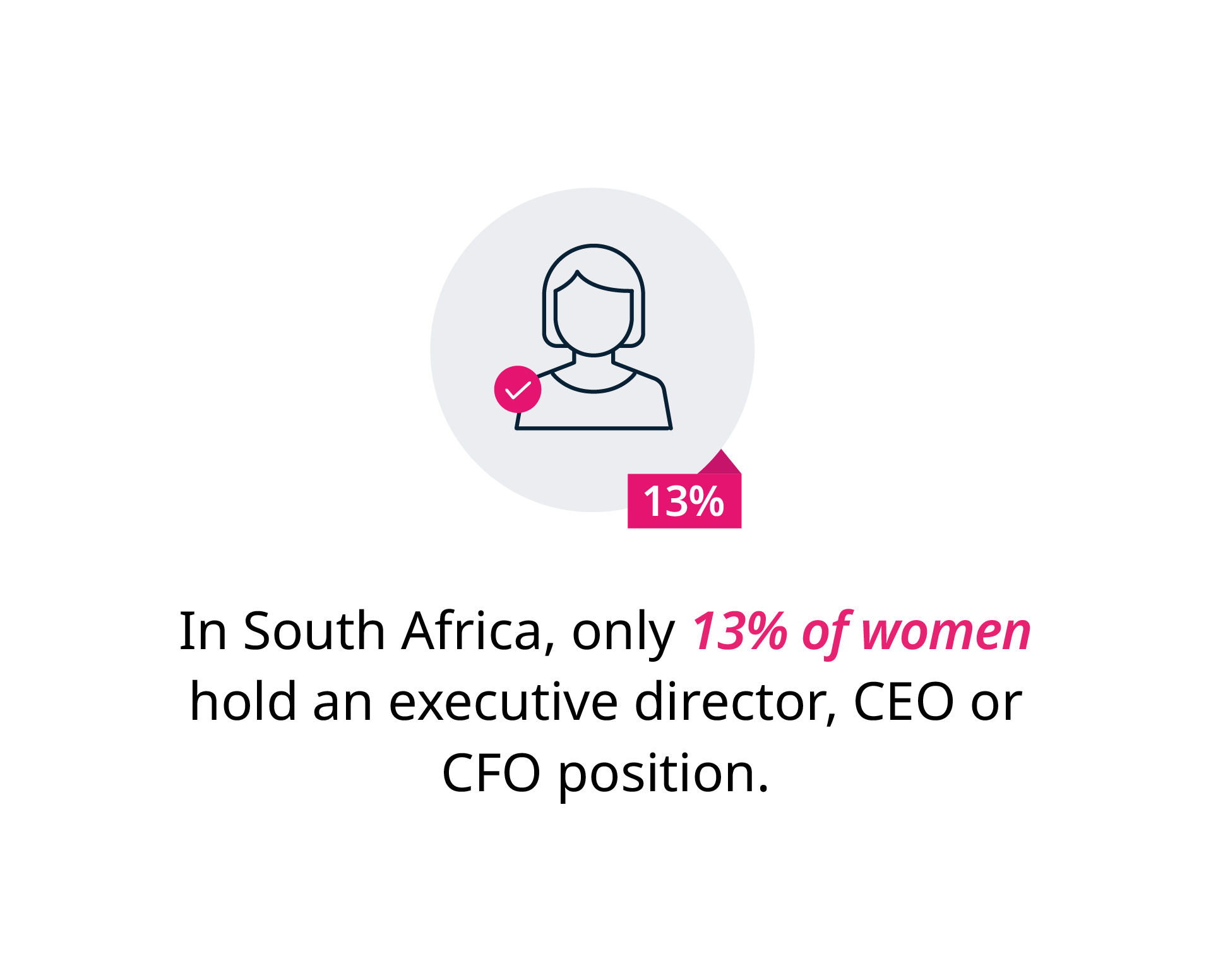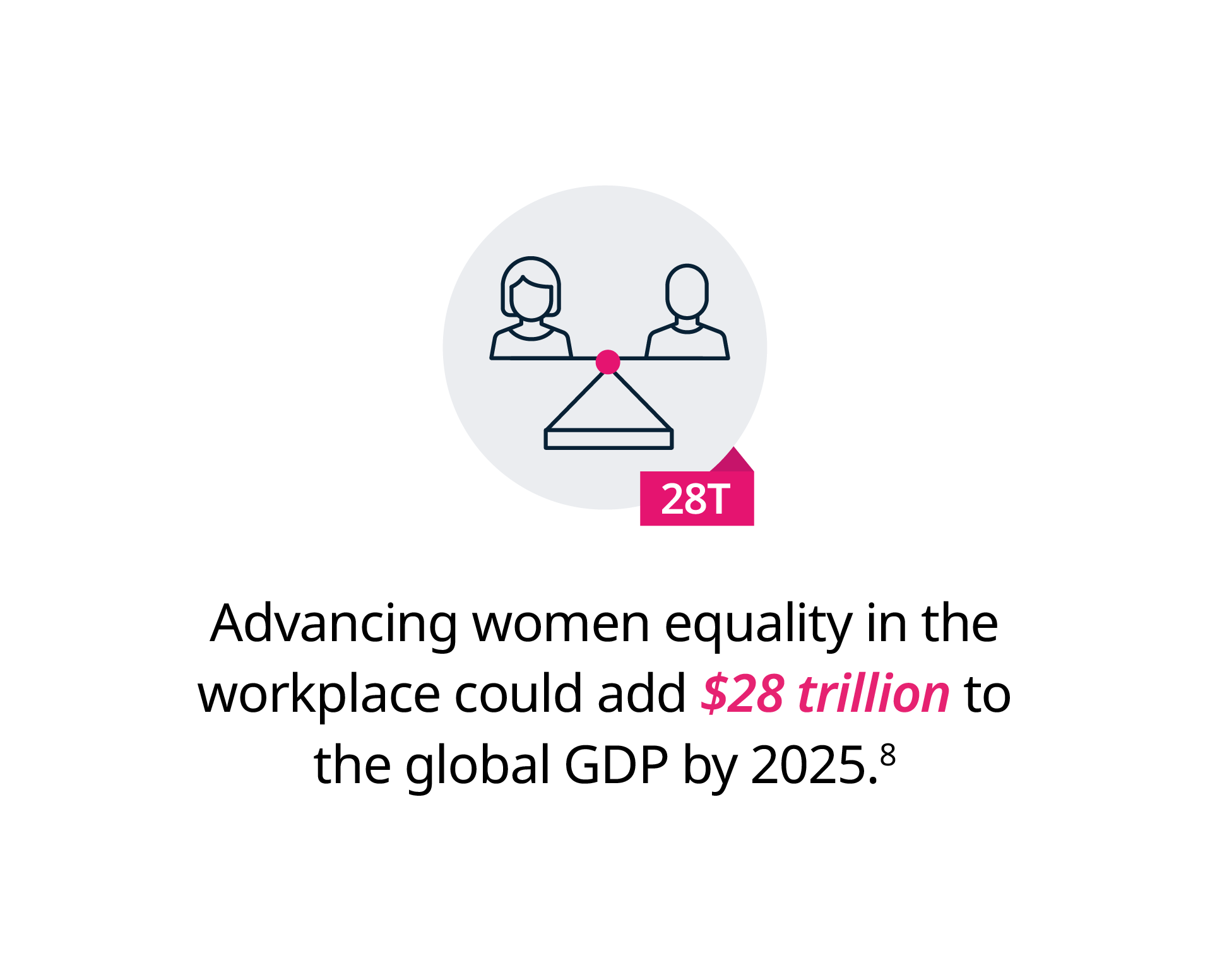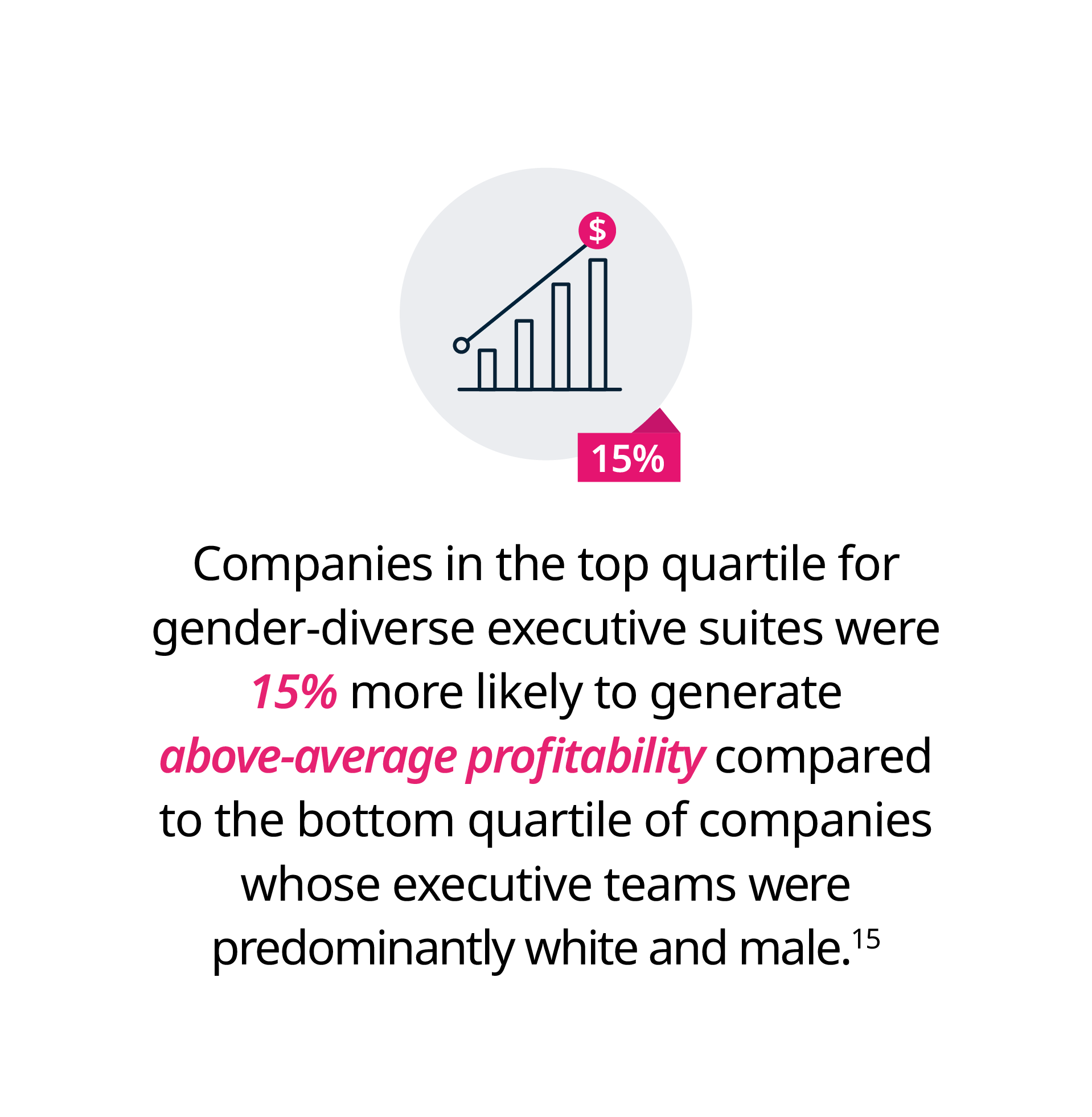The Value of Women Empowerment in Leadership Today
It’s official – a shift toward female empowerment is underway. As parity increases, women are becoming more valued in the workplace and in leadership positions. Bridging the gender income gap is also no longer a conversation centered around complaints and inactivity. Gender equality is now a force to be reckoned with and one that can be felt loudly worldwide.
Gender disparity within leadership roles has been built up over generations, as non-inclusive customs and practices nurtured stereotypes and patriarchal cultures. A decade ago, the number of women in leadership positions were still relatively low: in 2011, there were only 12 women holding CEO roles in Fortune 500 companies; in 2016, 21 women held CEO roles, and in 2020, 37 women were CEOs.1
While the statistics may seem discouraging, they do show growth. Right now, the effort to overcome barriers in male-dominated business sectors is being driven by some of the world’s leading women in industry and major campaign initiatives. The future leaders of our world are being reimagined.
Identify your unique strengths and use them to drive network-supported innovation with the online Women’s Leadership course from the Yale School of Management Executive Education.
A shift to female leadership
Gender diversity in leadership roles has historically been limited, as men have taken the lead in socioeconomic and political spheres. In 2020, the percentage of women in national parliaments was 25.58 percent. While this number increased less than a percentage point from 24.63 in 2019,2 there’s good news: the number of female CEOs featured in the Fortune 500 hit an all-time record in 2021 when 41 women held the coveted title of CEO.3 However, in South Africa, only 13 percent of women held a CEO position in 2021.4
Can the current gender imbalance solely be blamed on past systems of corporate patriarchy? Or are many of today’s businesses still not providing a space for women to develop and thrive in?

In recent years, there’s been a focus on creating more women-oriented mentoring spaces,5 as companies realize they need to facilitate the space and policies for female leaders to develop.
Refinitiv’s Diversity & Inclusion (D&I) Index rates 100 top organizations based on their diversity and inclusiveness. In 2021, the U.S. led with 25 companies, while the U.K. had nine companies on the list. Close behind were Germany, Australia, and Italy, each with six spots on the list. South Africa, Canada, and France followed with five.6 The South African companies that formed part of the index included Woolworths Holding Limited, Nedbank Group Ltd., Truworths International Limited, Foschini Group Ltd, and Adcock Ingram Holdings Limited.7
Globally, women (and men) are making a case for diversity and inclusion. Many businesses, and the women who work for them, are implementing strategies that drive the changes they’d like to see. One way in which many organizations now prioritize female leadership is by offering training and encouraging women who show leadership potential to join relevant courses.
Make women feel valued by closing the gender pay gap
The gender pay gap is arguably the most significant barrier between women and career progression. It’s been previously debated that the lack of women in senior executive positions is due to the lack of incentive.

Research shows, however, that closing the gender pay gap can have countless benefits. For example, the Council on Foreign Relations found that the four indicators of gender parity identified by the McKinsey Global Institute – education level, financial and digital inclusion, unpaid care work, and legal protection – are linked to significant gains for countries. In the Middle East and North Africa, the gross domestic product (GDP) can be impacted by $2.7 trillion, while the Sub-Saharan Africa GDP could be increased by $721 billion if gender parity is achieved.9
The Pew Research Center found that, in 2020, women earned 84 percent of what men earned, and that number has remained stable for the last 15 years.10
Many organizations are fighting for equal pay and decreasing the gender gap in the workplace. Some of these include the American non-profit organization Equal Rights Advocates, the Institute for Women’s Policy Research, Workplace Gender Equality Agency, the Equality and Human Rights Commission, the Equality Trust, and the U.S. National Women’s Law Center.
However, despite the obvious benefits of equal pay, South African women still earn an average of 30 percent less than men for the same job, according to Stats SA’s Inequality Trends in SA report.11
More women equals greater profitability
Gender diversity benefits individuals and businesses, as it’s been proven to enhance workplace productivity and profitability. In fact, there’s a direct link between increasing female partners and increased revenue: research shows that including 10 percent more women in a business can increase revenue by 10 percent.12
But why are we seeing these positive changes when more women join the workforce?
A Forbes article discusses how women are evaluated as effective leaders and quotes research that shows they’re more effective than men – with their rating increasing even more during the COVID-19 pandemic.13 In addition, McKinsey & Company Lean In released their Women in the Workplace 2021 report recently and found that, despite COVID-19 burnout, women are still becoming stronger leaders. The report indicates that women are:14
- Supporting their teams
- Spending time on work that falls outside of their formal job responsibilities
- More likely than men to learn about and work to remedy a lack of equity and diversity in the workplace
- Strategizing and driving growth

The value of women is increasingly being recognized in the workplace. To help shine the light on your abilities as a valuable female leader, it’s important to keep your skills sharp. Discover how to upskill yourself for today’s highly competitive workplace here.
Progress toward gender equality in the workplace
Organizations such as Accenture, Women’s Forum, the Lean In movement, and Time’s Up are all harnessing the power of women. These organizations acknowledge that women leaders also empower other women.
For example, Lean In is a global initiative that’s committed to helping women achieve their goals. The organization facilitates mentoring spaces for women and, in more than 160 countries, women regularly gather to talk, encourage, and support each other. Their research shows that individuals feel more confident and able within a group.16 As a collective, Lean In is dedicated to creating awareness campaigns and developing research that aims to advance women.
Current research makes it clear that there’s still a major diversity gap within international C-suites. However, the huge under-representation of women in leadership positions means there’s a wealth of opportunity waiting. Female development initiatives have never been so pertinent. With the correct structure supporting women leaders, there’s the potential to influence industries and enhance businesses through increased inclusivity.
Leadership and female empowerment are lifelong journeys of learning, investing, and developing. This leads to the question: how can you join this movement? The first step is to refine your skills, learn how to face workplace challenges, and develop practical strategies for leadership development.
- 1 (Nd). ‘Barriers & Bias: The Status of Women in Leadership’. Retrieved from AAUW. Accessed January 11, 2022.
- 2 (Nd). ‘Proportion of seats held by women in national parliaments’. Retrieved from The World Bank. Accessed January 11, 2022.
- 3 (Oct, 2021). ‘Women CEOs in America 2021 Report’. Retrieved from PR Newswire.
- 4 Buthelezi, L. (Aug, 2021). ‘Why SA’s list of female CEOs at top companies is still so short’. Retrieved from News24.
- 5 Kramer, A. (Jul, 2021). ‘Women need mentors now more than ever’. Retrieved from Forbes.
- 6 (Sep, 2021). ‘Refinitiv announces the 2021 D&I Index top 100 most diverse & inclusive organizations globally’. Retrieved from Refinitiv.
- 7 (Nd). ‘Introducing the 2021 D&I top 100’. Retrieved from Refinitiv. Accessed January 11, 2022.
- 8 (Nd). ‘Growing economies through gender parity’. Retrieved from the Council on Foreign Relations. Accessed January 11, 2022.
- 9(Nd). ‘Growing economies through gender parity’. Retrieved from the Council on Foreign Relations. Accessed January 11, 2022.
- 10 Barroso, A. & Brown, A. (May, 2021). ‘Gender pay gap in U.S. held steady in 2020’. Retrieved from Pew Research Center.
- 11 Zwane, T. (Aug, 2020). ‘The gender pay gap keeps widening in South Africa’. Retrieved from News24.
- 12 Lamano, G. (Dec, 2021). ‘Three tips for boosting business profits: How investing in diversity increases profitability’. Retrieved from Forbes.
- 13 Wittenberg-Cox, A. (Mar, 2021). ‘Data shows women make better leaders. Who cares?’ Retrieved from Forbes.
- 14 (Nd). ‘Women in the Workplace 2021’. Retrieved from Women in the Workplace. Accessed January 11, 2022.
- 15 (Aug, 2020). ‘Opinion: The numbers don’t lie: Diverse workforces make businesses more money’. Retrieved from MarketWatch.
- 16 (Nd). ‘Lean In circles’. Retrieved from Lean In. Accessed January 11, 2022.